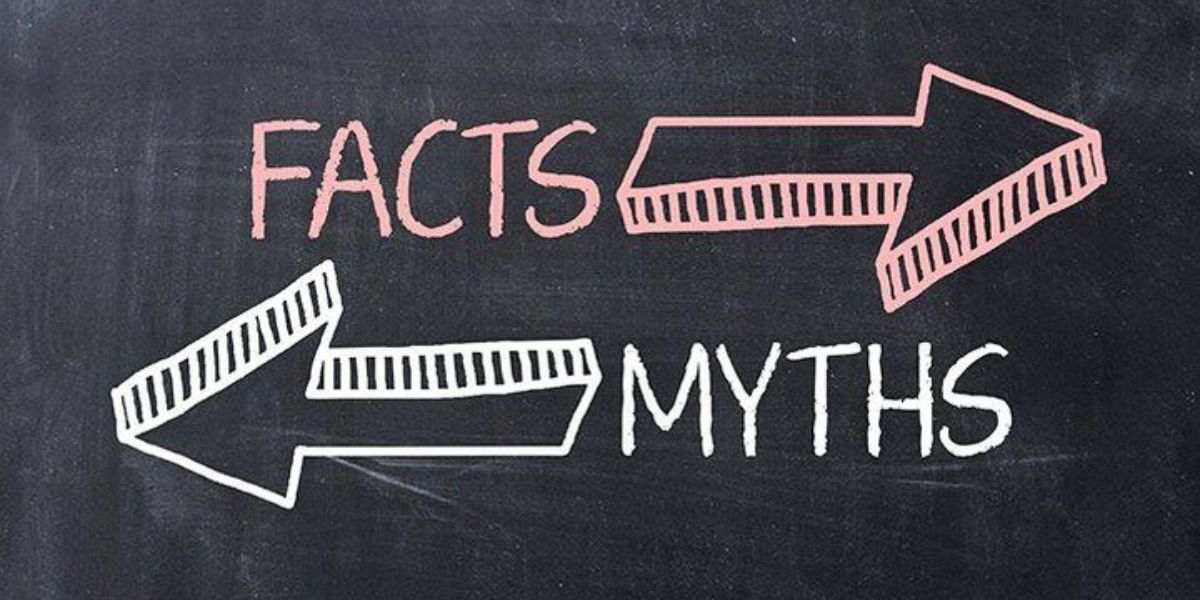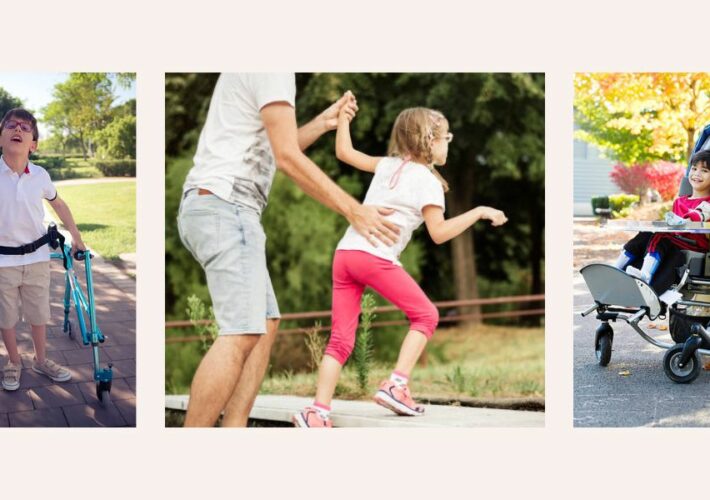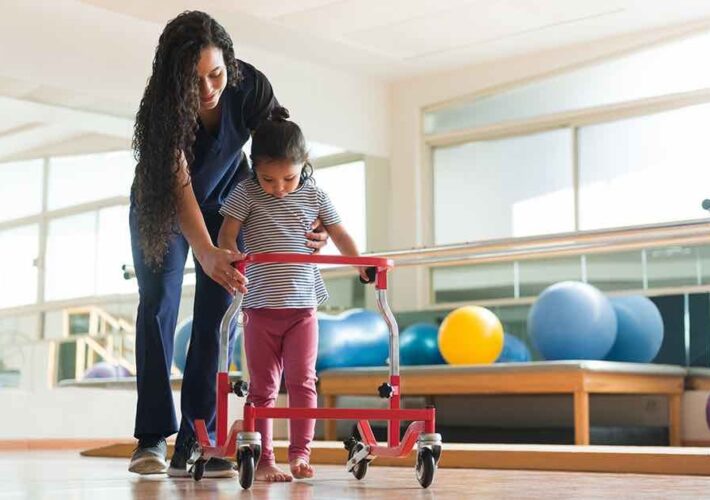Cerebral palsy (CP) is a complex condition that affects children in different ways, with varying degrees of severity, and many children and adolescents with cerebral palsy live normal, healthy, and fulfilling lives. But even though cerebral palsy is a well-known condition, there are still many misconceptions and misinformation. It’s even more important that you, the parents, understand what it really means to have a child with cerebral palsy. Let’s dispel some myths and learn the truth!
TL;DR – the highlights:
- CP is not inherited, but is caused by brain damage before, during or even after birth
- assistive devices can help children with severe CP to be as active as independent walkers
- some children with CP have difficulty speaking, but communication devices can help them become successful communication partners
- many children with CP end up living fulfilling lives, forming close friendships and having successful careers, they may even have a driver’s license
- lots of children with CP are completely independent or need just a little help or environmental adaptations
Myth #1: You can inherit CP from your family
A child can indeed inherit certain conditions from their parents, but CP is not one of them. In fact, any association within families is often due to certain conditions being passed down between generations (e.g., a heart condition can increase the risk of CP) – not the disability itself. Instead, CP usually results from damage to the developing brain before or during birth, or even during the first years of a child’s life, while the brain is still developing.
Myth #2: CP is caused by a lack of oxygen
Only a very small percentage (2-10%) of CP cases are due to complications at birth (such as lack of oxygen) and in most cases the cause is unknown. As mentioned earlier, it can be the result of brain damage before or during birth or even after birth. This can happen for many reasons, including a complicated birth, premature birth, illness during pregnancy such as rubella or chickenpox, brain injury from a fall, or central nervous system infection in young children (e.g., meningitis or encephalitis).
Myth #3: A child with CP will be in a wheelchair
It’s true that there are children with severe CP who will always have to rely on mobility aids such as wheelchairs or walkers to get around. Many others, however, can walk and run without any assistance. In fact, more than half of children with CP do not need mobility aids at all. While some may walk slowly or with a different gait pattern, children with CP can indeed learn to walk independently.
Even those who cannot walk are not necessarily homebound. Assistive technologies can help wheelchair users stay just as active as independent walkers. In addition, many communities are investing in accessibility measures, such as curb ramps and wider sidewalks, to ensure that people with mobility impairments can freely enjoy the outdoors.
Myth #4: All children with CP have intellectual disabilities
It’s important to know that although CP is a neurological disorder, it’s fundamentally a problem of motor function, as it primarily affects movement and posture. However, since some other disorders can occur in addition to CP, it’s often assumed that children with this condition will also have intellectual disabilities. But only 50% of children with CP also have some degree of cognitive impairment, which can vary from mild to severe. Children with CP are more likely than the general population to have learning disabilities other than intellectual disabilities.
Myth #5: Children with CP cannot communicate
Because CP can also affect the muscles around the mouth and tongue, it’s true that some children with CP have difficulty speaking – and 1 in 4 children won’t be able to communicate with speech. But that doesn’t mean they can’t communicate with others – there are many other ways to communicate, such as sign language, communication boards, and assistive technology (e.g., electronic tablet). A speech therapist can help children and their families with any communication problems.
Myth #6: Children with CP do not make friends
Just because a person has CP doesn’t prevent them from developing close friendships, finding romance, or achieving great things. Many children with CP end up living long, fulfilling lives. Make sure you don’t treat a child with CP as different from other kids. Introducing them to other children with special needs also helps.
Myth #7: Career choices are limited for children with CP
While it’s true that people with disabilities face higher unemployment rates, many children with CP grow up to have successful careers. There have been tremendous improvements in workplace disability legislation, making it easier than ever for children to get and keep gainful employment as they grow up. Many adults with CP find gainful employment and achieve heights that many people with CP haven’t achieved. It’s important to encourage employers to hire inclusively and to give disabled people the opportunity for meaningful employment, just as they would give it to any other candidate.
Myth #8: Children and adolescents with CP cannot live independently
Although some children with CP require intensive support and care, this is not the case for all. Many children and adolescents with CP live independent lives, while others may still need some help. There are many tools and resources they can access to help them live independently, including assistive technologies (e.g., mobility aids and transfer equipment), personal care workers for specific tasks, as well as home and school environment adaptations.
Myth #9: There is a cure for CP
This is one myth that, while it would be nice if it were true, it just isn’t. There’s currently no cure for CP, at least not yet. But that doesn’t mean your child can’t have a healthy and productive life. Today, there are so many advances in medicine that most children with CP continue to thrive and live happy lives with the help of physical therapy, occupational therapy, counseling, medications, assistive devices, and more.
Myth #10: My child with CP would never be able to drive a car
It’s true that only 23% of adults with CP have a driver’s license1 but that doesn’t mean it’s impossible. There are many car adaptations that allow young people with disabilities to learn to drive a car. Modifications of motor vehicles mean that even children with paraplegia can learn to drive by the time they reach their teenage years. By adjusting the steering mechanism, they can control the car with their hands.
Even today, when we know much more about the condition, the term cerebral palsy can still have negative connotations and children with CP can often be misunderstood and stigmatized. While growing up with CP is often challenging, it’s even more important that children know the realities of their disorder, and that these realities do not necessarily include limitations on who they can be and what they can achieve. However, medical organizations should continue to raise public awareness about children with CP and address negative perceptions. As health professionals, we must also do our best to prove them wrong and empower children to become an equal part of society.
What do you think? What misconceptions do you encounter as a parent of a child with CP?
REFERENCES:
- Mesterman R, Leitner Y, Yifat R, Gilutz G, Levi-Hakeini O, Bitchonsky O, Rosenbaum P, Harel S. Cerebral palsy long-term medical, functional, educational, and psychosocial outcomes. J Child Neurol. 2010 Jan;25(1):36-42. doi: 10.1177/0883073809336677




